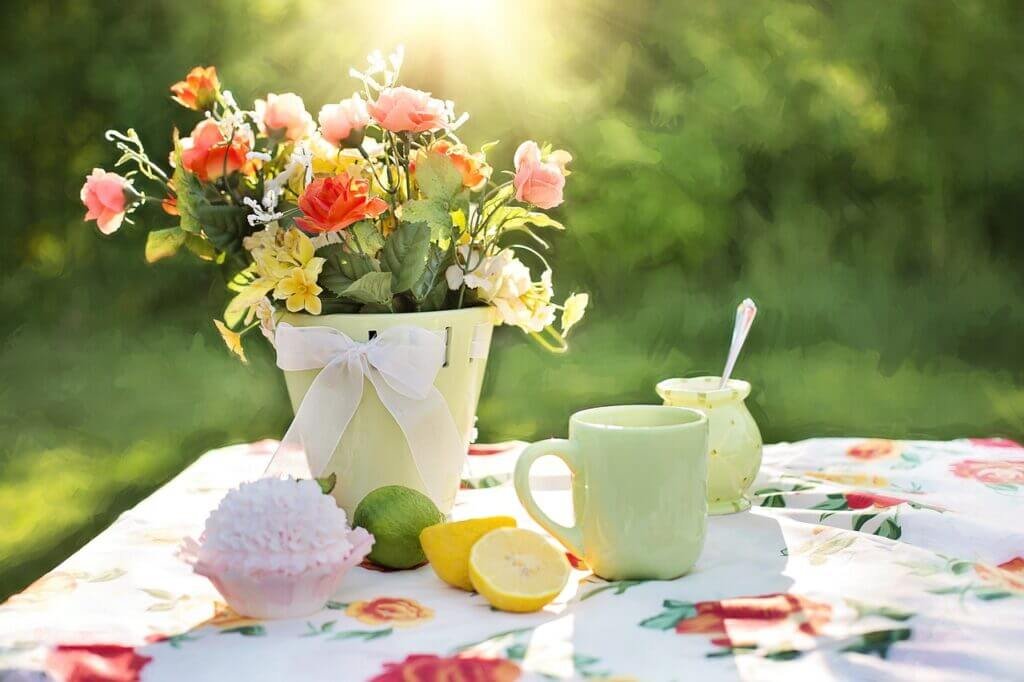City gardening is often misunderstood and surrounded by numerous misconceptions. People tend to believe that urban areas are devoid of green spaces and are unsuitable for cultivating plants. However, city gardening is an increasingly popular practice that not only adds beauty to urban landscapes but also brings a range of benefits to individuals and communities. In this article, we will debunk some common misconceptions about city gardening and highlight the rewards of embracing this green and sustainable movement.

Misconception 1: City gardening is only for people with large spaces
Many people mistakenly believe that city gardening can only be done if you have a spacious backyard or access to a community garden. However, this is far from the truth. City gardening is actually quite versatile and can be adapted to fit any space, no matter how small. Whether you live in an apartment with a balcony, a townhouse with a tiny yard, or even a studio with just a windowsill, there are plenty of options for creating a thriving urban garden. Container gardening, vertical gardening, and even indoor gardening are all feasible ways to bring greenery to your city home.
Small balcony? No worries!
Even if you only have a small balcony, you can still enjoy the benefits of city gardening. With some creativity and resourcefulness, you can transform your balcony into a vibrant oasis. Utilize hanging baskets, wall-mounted planters, and railing planters to maximize your space vertically. Choose compact and decorative plants like herbs, flowers, or small vegetables that thrive well in containers. Taking advantage of your limited space can lead to an inspiring and beautiful urban garden.
Limited yard space? Get creative with vertical gardening!
If you have limited yard space, don’t fret! Vertical gardening is an excellent solution to make the most of what you have. Install trellises, arbors, or even repurpose an old ladder to provide support for climbing plants such as cucumbers, beans, or vines. Hanging planters, wall pockets, and pocket gardens can also help optimize your space while adding a unique aesthetic to your urban garden. By going vertical, you’ll be amazed at how much greenery you can cultivate in a small area.
Indoor gardening: Bringing the outdoors in
If you don’t have access to outdoor space at all, don’t despair. Indoor gardening allows you to bring the beauty and benefits of plants right into your living space. Choose plants that thrive in low-light conditions, such as pothos, snake plants, or peace lilies. Window sills, shelves, and even walls can be transformed into mini-gardens filled with various plants and herbs. Indoor gardening not only adds a touch of nature to your home but also contributes to cleaner air quality and a more soothing atmosphere.
Misconception 2: City gardening requires a lot of time and effort
One of the biggest misconceptions about city gardening is the belief that it is a labor-intensive and time-consuming activity. While gardening does require some level of commitment, it can be tailored to suit your schedule and energy level. With a bit of planning and smart gardening techniques, you can enjoy the benefits of nature without feeling overwhelmed.
Low-maintenance plants for busy schedules
For those with busy schedules, choosing low-maintenance plants is key. Look for varieties that require minimal watering, such as succulents, cacti, or certain types of herbs like rosemary or thyme. These plants are resilient and can tolerate periods of neglect without suffering. Additionally, consider using self-watering containers or installing drip irrigation systems to automate the watering process. By selecting the right plants and implementing efficient watering methods, you can minimize the time and effort needed to maintain your city garden.
Strategic planting and companion gardening
Strategic planting can also help reduce the amount of time and effort required for city gardening. By grouping plants with similar water and sunlight requirements together, you can streamline the watering process and optimize their growth. Companion gardening is another technique that can be employed in city gardens. By choosing plant combinations that support each other’s growth, such as planting flowers that attract pollinators near your vegetable crops, you can create a more balanced and self-sustaining ecosystem. These practices not only save you time but also promote healthier plants and fewer pest problems.

Misconception 3: City gardening is expensive
Contrary to popular belief, city gardening doesn’t have to be a costly endeavor. With a little resourcefulness and creativity, you can build a thriving urban garden without breaking the bank. By focusing on the essentials and making smart choices, you can create a budget-friendly oasis right in the heart of the city.
Seek out affordable or recycled materials
When it comes to containers, planters, and other gardening supplies, you don’t have to purchase brand new items. Look for affordable alternatives such as recycled containers, old buckets, or wooden crates that can be repurposed into planters. Thrift stores and yard sales can also be treasure troves for affordable gardening supplies. Additionally, consider starting your garden from seeds instead of buying pre-grown plants, as seeds are more cost-effective and offer a wider variety of plant options.
Utilize organic waste and composting
Another way to save money is by utilizing organic waste and implementing composting practices. Instead of buying expensive fertilizers, create your own nutrient-rich compost by composting kitchen scraps, coffee grounds, or yard waste. Composting not only reduces waste but also provides a free and natural source of nourishment for your plants. By recycling organic materials, you can save money while simultaneously enriching your soil.
Connect with the community and share resources
In many cities, there are community gardening programs and initiatives that aim to bring people together through gardening. These programs often provide shared garden spaces, tools, and resources for a minimal fee or even for free. Participating in a community garden allows you to connect with fellow gardeners, learn from experienced individuals, and share the joy of gardening. By pooling resources and knowledge, you can enjoy the benefits of city gardening without a significant financial investment.
Misconception 4: City gardening can only be done in direct sunlight
While it is true that many plants thrive in direct sunlight, city gardening is not limited to sunny locations. In fact, there are numerous plants that can tolerate and even thrive in partial shade or even full shade environments. This opens up opportunities for city gardeners who have limited access to direct sunlight, such as those living in shaded areas or high-rise buildings.
Shade-loving plants for urban gardens
For city gardeners with limited sunlight, there are plenty of plant options to choose from. Ferns, hostas, impatiens, and begonias are just a few examples of shade-loving plants that can add lushness and color to your urban garden. Leafy greens like lettuce, spinach, and kale are also well-suited for shady conditions. Additionally, certain herbs such as mint, parsley, and chives can thrive in areas with less sun. By selecting shade-tolerant plants, you can still create a thriving urban garden, regardless of the amount of sunlight available.
Maximizing natural light and using artificial lighting
While some plants can adapt to shade, it’s still important to maximize the natural light that your garden receives. Position your plants near windows or balconies that receive the most sunlight during the day. If natural light is limited, consider utilizing artificial lighting, such as grow lights or fluorescent bulbs, to supplement the lack of sunlight. These artificial light sources can provide the necessary light spectrum for plant growth and ensure that your urban garden flourishes.

Misconception 5: City gardening is not suitable for growing food
Growing your own food in the city may seem like an impossible task for many, but this is certainly not the case. City gardening provides ample opportunities to cultivate a wide range of edible plants, allowing you to enjoy fresh and homegrown produce right at your doorstep.
Compact vegetables and herbs for small spaces
For those with limited space, compact vegetables and herbs are ideal choices for urban gardening. Tomatoes, peppers, lettuce, radishes, and herbs like basil, cilantro, or thyme are just a few examples of edibles that can thrive in containers. These plants not only provide a bountiful harvest but also add flavor and freshness to your meals. With proper care and attention to watering and fertilizing, you can cultivate a thriving mini-vegetable garden in even the smallest of city spaces.
Microgreens and sprouts: Nutritious and space-saving
If you’re truly short on space or time, consider growing microgreens and sprouts. Microgreens, which are the young seedlings of various vegetables and herbs, can be grown in shallow containers or even on kitchen countertops. They are packed with nutrients and can be harvested in just a few weeks. Sprouts, such as alfalfa or mung bean sprouts, can be grown using sprouting jars or trays, requiring minimal space and effort. Both microgreens and sprouts are excellent additions to salads, sandwiches, or smoothies, providing a healthy and convenient source of homegrown sustenance.
Community gardens and allotments
If you’re passionate about growing a wider variety of food or have limited space at home, consider joining a community garden or renting an allotment plot. Community gardens often provide designated areas where members can grow their own vegetables and fruit. These shared spaces not only offer larger planting areas but also foster a sense of community and knowledge sharing. Allotment plots are another option, where you can rent a small plot of land specifically for gardening purposes. These plots typically allow for larger-scale food production and give you the opportunity to grow a wider range of crops.
Misconception 6: City gardening is only for experienced gardeners
Some individuals may believe that city gardening is only suitable for experienced gardeners who possess extensive knowledge and skills. However, city gardening is a hobby that can be embraced by anyone, regardless of their skill level or gardening experience. With plenty of resources, support, and a willingness to learn, anyone can become a successful city gardener.
Start small and learn as you go
If you’re new to gardening, it’s best to start small and gradually expand your urban garden as you gain more confidence and knowledge. Begin by selecting a few easy-to-grow plants or herbs that are well-suited for your environment. Learn about their specific care requirements, such as watering, sunlight, and soil preferences. As you become comfortable with the basics, you can experiment with different plant varieties or gardening techniques. Don’t be afraid to make mistakes, as they are part of the learning process and can ultimately lead to a more successful and fulfilling gardening journey.
Take advantage of educational resources
In today’s digital age, there are numerous online resources, blogs, and forums dedicated to city gardening. These platforms provide a wealth of information, tips, and guidance that can help you navigate the world of urban gardening. Online tutorials, YouTube videos, and virtual workshops offer step-by-step instructions and insights from experienced gardeners. Local gardening clubs and organizations may also host workshops or events specifically aimed at supporting novice gardeners. By taking advantage of these educational resources, you can quickly enhance your gardening skills and feel more confident in your ability to create a thriving urban garden.
Seek advice from experienced gardeners
Experienced gardeners are often more than willing to share their knowledge and offer guidance to those starting out. Connect with local gardeners in your community or join gardening groups to gain access to a network of experienced individuals. Engage in conversations, ask questions, and learn from their firsthand experiences. By seeking advice and learning from others, you can accelerate your learning curve and avoid common pitfalls. Building a community of fellow gardeners not only provides valuable support but can also enhance your enjoyment of city gardening.
Misconception 7: City gardening is not sustainable
Many people believe that city gardening is not an environmentally sustainable practice. However, when done consciously and with eco-friendly methods, city gardening can actually contribute to a more sustainable and resilient urban environment.
Benefits of green spaces in cities
City gardening plays a vital role in creating green spaces within urban areas. These green spaces, whether they are small balconies or community gardens, help counterbalance the concrete and asphalt jungle of cities. They provide habitats for birds, bees, and other pollinators, which are essential for a healthy and balanced ecosystem. Green spaces also help reduce air pollution by absorbing carbon dioxide and releasing oxygen, improving air quality for city dwellers. Additionally, urban gardens can act as natural cooling systems, mitigating the heat island effect often experienced in cities.
Organic and regenerative gardening practices
Adopting organic and regenerative gardening practices can greatly enhance the sustainability of city gardening. Avoiding synthetic fertilizers and pesticides and opting for organic alternatives contributes to healthier soil and water systems. Implementing composting practices and utilizing rainwater harvesting techniques reduce waste and conserve water resources. Employing companion planting methods and attracting beneficial insects help control pests naturally, minimizing the need for harmful chemicals. By prioritizing sustainability in your city garden, you can create a more resilient urban ecosystem and contribute to a healthier planet.
Urban farming and food security
In recent years, urban farming has gained popularity as a means to address food security concerns. By growing food locally, urban gardeners help reduce the reliance on long-distance transportation and contribute to a more sustainable food system. City gardens provide opportunities for individuals and communities to have greater control over their food sources and promote the consumption of fresh and nutritious produce. Through initiatives like rooftop gardens, vertical farms, and community agricultural projects, urban farming is transforming the way we think about food production and sustainability.
Misconception 8: City gardening is just a trend
Some individuals may view city gardening as merely a passing trend, but the reality is that it’s here to stay. As urbanization continues to rise and the importance of connecting with nature becomes more evident, city gardening is becoming a fundamental part of modern urban living.
Wellness and mental health benefits
City gardening offers numerous wellness benefits that go beyond simply growing plants. Research has shown that spending time in green spaces and engaging in gardening activities can reduce stress levels, improve mood, and enhance overall mental well-being. The act of nurturing plants and witnessing their growth can be meditative and provide a sense of purpose. With more people recognizing the importance of self-care and finding ways to disconnect from the hustle and bustle of city life, city gardening is increasingly embraced as a means to find solace and rejuvenation.
Educational and community-building opportunities
City gardening also provides valuable educational opportunities, particularly for children and young adults. By involving younger generations in gardening activities, we can foster a love for nature, teach important lessons about environmental stewardship, and cultivate practical skills. School gardens, urban gardening programs, and community initiatives empower individuals to connect with their food sources, learn about sustainability, and form stronger bonds with their communities. City gardening is not just about plants; it is about fostering relationships, creating learning opportunities, and building a sense of togetherness.
Sustainable and localized food production
The desire for sustainable and localized food production is a growing movement that city gardening supports. As people become more conscious of the environmental impact of long-haul food transportation and the quality of mass-produced produce, there is a greater emphasis on growing food closer to home. City gardening allows individuals to take control of their food sources, reduce their carbon footprint, and enjoy the freshest and most nutritious produce possible. With an increasing awareness of the importance of sustainable food systems, city gardening will continue to thrive as a way to connect with the earth and ensure food security for urban populations.
Misconception 9: City gardening reduces property value
Some people worry that having a garden in the city may decrease their property value. However, the truth is that a well-maintained urban garden can actually enhance the appeal and value of your property.
Curb appeal and aesthetics
A beautiful and well-designed city garden can greatly improve the overall aesthetic of your property. An abundance of greenery and colorful flowers can create an inviting and visually appealing atmosphere. Whether it’s a small balcony garden or a lush backyard oasis, a well-maintained garden can make your property stand out and attract potential buyers or renters. A thoughtfully landscaped urban garden can be a significant selling point and add value to your property.
Privacy and tranquility
In a bustling city environment, having a garden can provide a sense of privacy and tranquility. Well-placed shrubs, hedges, or climbing plants can act as natural barriers, creating a more secluded and peaceful outdoor space. This privacy can be particularly appealing in urban areas where neighbors or buildings are in close proximity. Being able to escape the hectic nature of the city and unwind in your own garden oasis can be a highly desirable feature for many individuals.
Environmental consciousness
With growing concerns about the environment and sustainability, having a city garden showcases your commitment to an eco-conscious lifestyle. A garden filled with native plants, pollinator-friendly flowers, and sustainable gardening practices can convey a sense of responsibility and environmental awareness. Potential buyers or renters who share these values may see your garden as a testament to your dedication to a greener and more sustainable way of living. In an era where environmental consciousness is increasingly valued, a well-maintained city garden can positively impact the perception and value of your property.
Misconception 10: City gardening is only for aesthetic purposes
Some may perceive city gardening as purely for aesthetic purposes, assuming that it only serves decorative functions. However, city gardening has far-reaching benefits beyond just beautifying urban spaces.
Environmental restoration and biodiversity
By creating urban gardens, city dwellers can actively contribute to ecological restoration and promote biodiversity within their communities. Planting native species and creating habitats for pollinators, birds, and other wildlife helps preserve local flora and fauna and supports a healthy urban ecosystem. Urban gardens act as green corridors, allowing wildlife to navigate through built-up areas and maintain their populations. City gardening is not just about pretty flowers; it is about building a sustainable and thriving natural environment.
Food self-sufficiency and access to fresh produce
City gardens that focus on growing food contribute to food self-sufficiency and access to fresh and nutritious produce. The ability to cultivate your own vegetables, fruit, and herbs allows you to reduce reliance on mass-produced, industrially farmed food. It provides an opportunity to consume fresh produce free from harmful pesticides and ensures a more direct and sustainable food source. Urban gardens also give individuals the chance to experiment with diverse plant varieties, heirloom species, and unique flavors that may not be readily available in grocery stores.
Community engagement and social cohesion
City gardening fosters community engagement and social cohesion, bringing people together through a shared passion for nature and gardening. Whether it’s participating in a community garden project, organizing gardening workshops, or simply chatting with neighbors about your blooming flowers, city gardening provides opportunities to connect with others. It breaks down barriers and cultivates a sense of belonging within urban neighborhoods. By working collectively to beautify and enhance the urban landscape, city gardeners contribute to a stronger sense of community and neighborhood pride.
In conclusion, city gardening is a versatile and accessible activity that can be enjoyed by anyone, regardless of the size of their urban space or their gardening experience. Dispelling the common misconceptions surrounding city gardening opens up a world of possibilities for urban dwellers. From small balconies to indoor spaces and community gardens, there are countless ways to embrace urban gardening and reap its numerous rewards. So, whether you’re a novice gardener or an experienced green thumb, it’s time to roll up your sleeves, get your hands dirty, and create your own vibrant city garden. Happy gardening!


